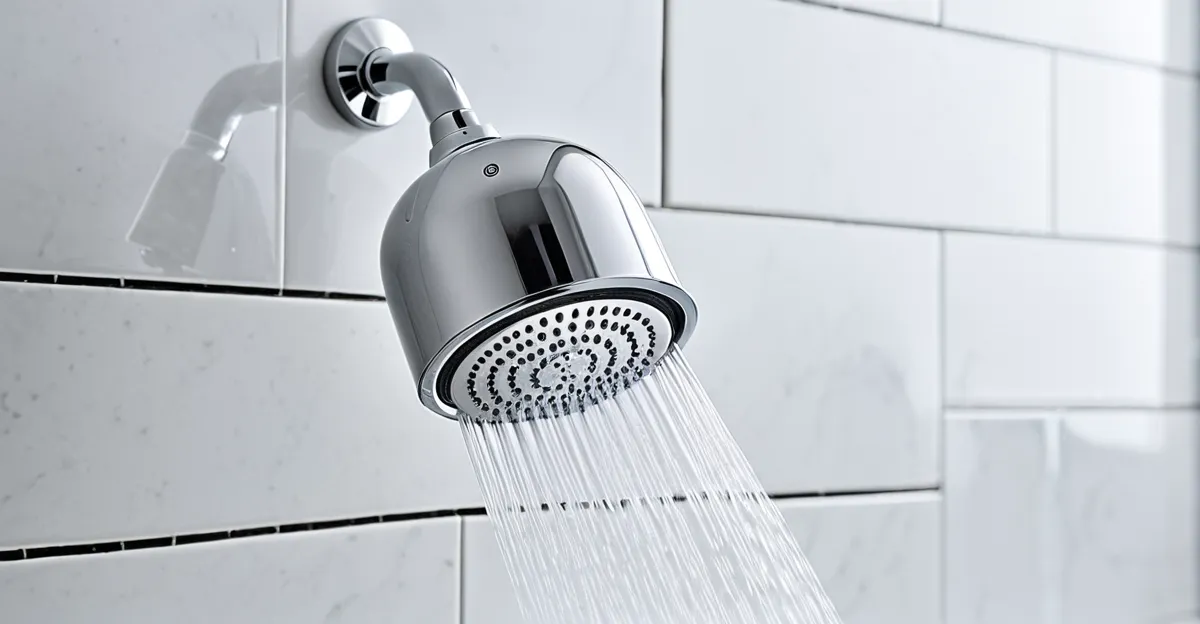How water-saving showerheads work and compare to standard models
Water-saving showerheads utilize innovative shower technology UK manufacturers have developed to reduce water consumption without compromising user experience. These devices often incorporate flow regulators or restrictors that limit the maximum water flow, typically between 6 to 9 liters per minute, compared to standard showerheads which can use up to 15 liters per minute or more. This means water-saving showerheads can cut flow rates by nearly half, promoting significant conservation.
Another common mechanism involves air injection technology, where air is mixed with water to maintain the sensation of strong pressure while using less water overall. This is a key differentiator in standard vs water-saving showerheads, as users won’t perceive a weaker stream despite the reduced flow rate. Additionally, some models include pulsating nozzles or finely tuned spray patterns that enhance coverage, ensuring comprehensive rinsing with minimal water waste.
Also to see : What are the best practices for maintaining garden equipment in the UK?
In the UK market, water-saving showerheads are widely available with several models boasting features like anti-lime scale nozzles and easy installation fittings. These features support longevity and ease of maintenance, making water-saving showerheads a practical choice for households seeking to balance environmental responsibility with comfort. These devices align well with government incentives and sustainability goals promoting efficient water use across the country.
Reduction in household water and energy bills
How saving water also cuts your energy costs
In the same genre : How can UK residents improve home Wi-Fi connectivity?
Using a water-saving showerhead can significantly help to reduce water bills in the UK, a key benefit for many households seeking to trim monthly expenses. Typically, these devices lower water flow rates without compromising shower comfort, resulting in noticeable drops in water consumption.
The savings on water bills stem mainly from the decreased volume of water used per shower. For an average UK household, this can mean a reduction of around 20–30% on their water bill. Given that water charges vary but often average about £1.50 per cubic meter, this reduction translates to tangible monthly savings.
Moreover, because the volume of hot water needed decreases, you naturally see a corresponding effect on your energy bills in the UK. Heating water accounts for a significant portion of household energy use; therefore, less hot water use means less energy consumed. This dual impact means users do not just save on water but also on gas or electricity bills used to heat water.
To put this into perspective with an example calculation: assuming a family uses 150 liters of water for showers daily, a water-saving showerhead reducing flow by 30% cuts this to 105 liters. Across 30 days, that’s 1,350 liters less water per month. At typical UK water and energy prices, this can save approximately £10-£15 on water and £5-£10 on energy monthly, contributing to lower energy bills UK-wide.
Investing in a water-efficient showerhead is therefore an effective way to save money with water-saving showerhead technology, as it reduces both consumption of water and the energy required to heat it—helping households achieve substantial bill reductions over time.
Environmental and sustainability impacts in the UK
When considering the environmental benefits of modern technologies and practices in the UK, their role in advancing sustainability is crucial. One significant area is the contribution to UK water conservation. Efficient water management systems help reduce wastage, directly supporting national efforts to conserve water resources amid increasing demand and climate pressures.
Furthermore, these technologies contribute to a decreased carbon footprint by minimizing energy consumption. For example, using energy-efficient appliances and sustainable water systems lowers reliance on fossil fuels, which aligns with the UK’s commitments to reduce greenhouse gas emissions.
Importantly, such initiatives are designed to be in harmony with both local and national environmental policies. The UK’s frameworks emphasize sustainability goals that integrate water conservation and carbon reduction strategies, ensuring consistent progress toward a greener future. By aligning innovations with these policies, the country strengthens its environmental stewardship and long-term sustainability objectives.
UK government incentives and regulatory considerations
The UK government actively supports water-saving initiatives through various government incentives and grants aimed at promoting sustainability. These incentives include financial assistance for installing water-efficient appliances and systems, which can significantly lower water consumption in homes and businesses. For example, some schemes offer rebates or vouchers covering part of the cost for upgrading to water-efficient fixtures.
Water efficiency standards UK plays a crucial role in shaping these efforts. The government enforces regulations that require compliance with established standards such as the Water Supply (Water Fittings) Regulations and the Building Regulations Part G, which set minimum criteria for water-saving installations. These standards help ensure that any new construction or renovation integrates water-efficient solutions compliant with UK regulations.
It’s important to note that government incentives and regulations can vary depending on the local authority or water supplier. Different councils or utility companies may provide additional grants or have specific programs tailored to regional water challenges. For instance, certain water suppliers in drought-prone areas might offer enhanced incentives to encourage water efficiency among consumers.
Understanding both the regulatory environment and available incentives allows homeowners and businesses to take full advantage of opportunities to reduce water usage, comply with water efficiency standards UK, and contribute to nationwide conservation goals.
User satisfaction and practical considerations for UK households
Understanding user satisfaction with water-saving showerheads in UK homes starts with real homeowner experiences. Many users report significant reductions in water bills without sacrificing water pressure, highlighting the practical benefits of these devices. The overall feedback emphasizes both environmental and financial gains, which boost user confidence in making the switch.
When it comes to installation tips UK homeowners should consider, these showerheads generally fit standard plumbing setups. Most models are designed for straightforward installation, often requiring no professional assistance. Users commonly note that simply unscrewing the existing showerhead and attaching the water-saving model suffices, provided the threads match. However, in cases of older or non-standard fittings, adapters available at hardware stores can ensure compatibility.
Maintaining these devices is crucial for consistent performance. Maintenance tips typically include regular cleaning of the showerhead to prevent lime scale buildup, common in the UK’s hard water areas. Users recommend soaking the showerhead in vinegar monthly to dissolve deposits and keep water flow steady. Troubleshooting usually revolves around pressure drops, which often result from clogged nozzles rather than product faults. By following these practical guidelines, UK homeowners can enjoy long-term reliability and sustained water savings.









